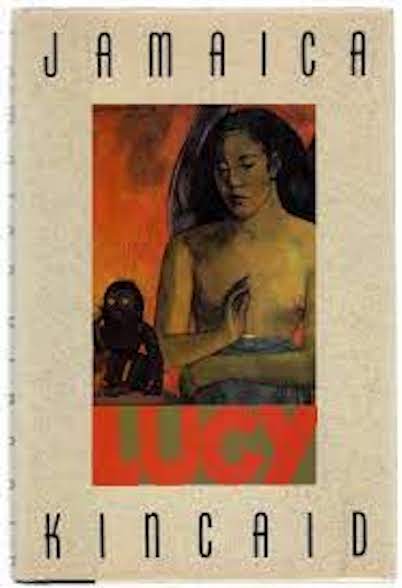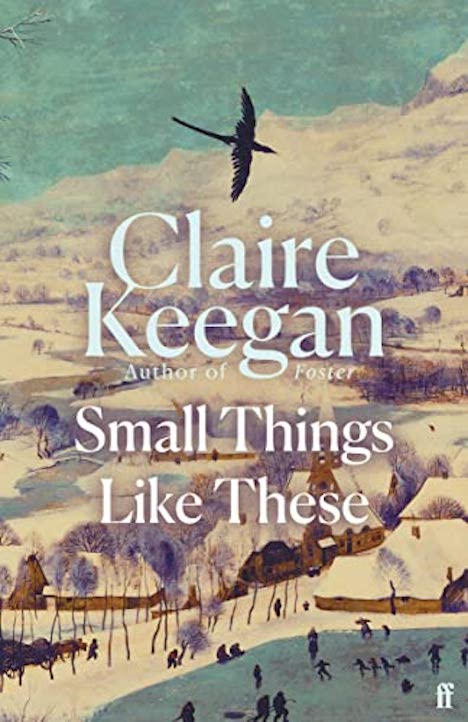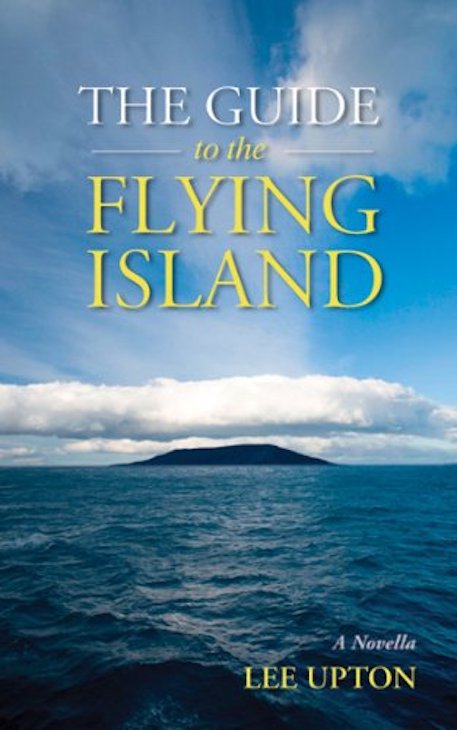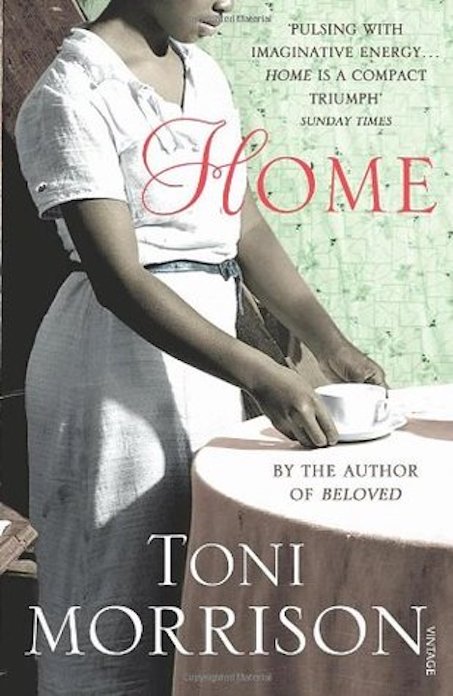The Novella: Some Thoughts About the Uncanny Genre
When I think of the books that have most haunted me, many are novellas: Henry James’s The Turn of the Screw, Muriel Spark’s The Girls of Slender Means, Rachel Ingalls’s Mrs. Caliban, Jamaica Kincaid’s Lucy, Don DeLillo’s The Body Artist, Denis Johnson’s Train Dreams. A strong novella is the appropriate length for its characters, its situation, and the implications of its plot, which may be considerable. Its size is right for its ambition. Generally occupying between 18,000 and under 60,000 words and read in one or a few sittings, there’s something relentless about the novella. The genre has to maintain much of the disciplined compression of the short story and at least some of the arc-like development of the novel — with fewer pages to obscure mistakes than the novel. The novella’s length allows for enough development without allowing the sunlight of familiarity to sterilize whatever is uncanny and irrational in the plot. Rather than a lesser form, a little sibling to the novel, the novella may be an intensification of the novel.
 Those who appreciate novellas tend to feel the need to be their defenders, as in the case of Ian McEwan who in his often-cited New Yorker essay argues that “the demands of economy push writers to polish their sentences to precision and clarity, to bring off their effects with unusual intensity, to remain focussed on the point of their creation and drive it forward with functional single-mindedness, and to end it with a mind to its unity. They don’t ramble or preach, they spare us their quintuple subplots and swollen midsections.”
Those who appreciate novellas tend to feel the need to be their defenders, as in the case of Ian McEwan who in his often-cited New Yorker essay argues that “the demands of economy push writers to polish their sentences to precision and clarity, to bring off their effects with unusual intensity, to remain focussed on the point of their creation and drive it forward with functional single-mindedness, and to end it with a mind to its unity. They don’t ramble or preach, they spare us their quintuple subplots and swollen midsections.”
And what does such precision lead to? In some ways, there’s a contradiction common to novellas, at least in my own experience of reading successful ones. The best of them, for all their discipline, somehow escape the confines of perfection and “functional single-mindedness.” They attain radiance, they reverberate, they suggest that at their heart is a fundamental loss that isn’t exactly centered toward a unified effect. That sense of having “missed” a connection isn’t uncommon for readers, for the novella is a leaky container that may remind us of absence and even ultimate silence. Brevity, compression, poetic imagery, and unresolved tensions open the novella to eerie possibilities. An author’s refusal to present an extended chain of causation attains a certain power and makes the genre an environment for ghosts of various sorts — whether the supernatural or an absolutely natural series of crises that abruptly dissipate and leave us suspended. Novellas, that is, haunt us in part because they’re brief enough that we can hold in mind their many parts but long enough that we can begin to grasp their meanings and then just as swiftly lose our grip.
Because of the genre’s assumed promise of difference from a novel, a novella may offer less of some elements than the longer form: fewer strands of meaning stretched and developed and explicated over time, fewer or even no subplots, less connective tissue or transitions between parts, a truncated interplay of cause and effect, fewer characters and fewer distractions and fewer moments of expanded reverie. This doesn’t mean that backstory is necessarily withheld in a novella; often, backstory may be absorbed in scenes that trigger characters’ memories while keeping the action forward-moving.
In a novella we don’t often grasp the experience of time lingering as fully, by handfuls of scenes, as in a traditional novel. And yet — how unforgettable so many novellas remain, as if the imprint they make strikes deepest because there’s something inherently mysterious about the disciplined limitations that the genre imposes. What the novella doesn’t usually attempt in terms of multiple subplots or in the accumulation of widely developed scenes it may attempt in terms of being especially reverberant.
When we’ve finished reading a novella, we may even be left a bit bereft, even bewildered. Yet if the novella were any longer, the plot might lose the ambiguity, the stroke of irrationality, the heightened state of tension that novellas make possible.
The Primary Character: A Mystery Shaped by a Mystery
I find it helpful to think of the primary character in a novella as a mystery shaped by a mystery. Because of the novella’s brevity there have to be gaps in our understanding of the character. That’s true of fiction of any length, but the novella, unlike a short story, generally allows us more sustained and greater familiarity with the character but less of an immersion in the character than in a novel. If characters aren’t fully revealed to the reader so too the characters are not fully revealed to themselves. The character’s movement within the novella is conditioned by what isn’t known by the character — or by what is misunderstood. Taking up less time to read and less space for a narrative arc to develop than a novel, the novella compensates in immediacy.
 The impression of mystery, inner and outer, creates a haunting effect, the intimation that the character may not ultimately solve one of more of the surrounding mysteries. That is, there’s a tear in the fabric of many novellas. Something in the novella refuses to be mended, and that “something” may be the primary character. We can debate the governess’s reactions in The Turn of the Screw forever — but find that we can never be entirely convincing. The novella refuses our attempts to possess it.
The impression of mystery, inner and outer, creates a haunting effect, the intimation that the character may not ultimately solve one of more of the surrounding mysteries. That is, there’s a tear in the fabric of many novellas. Something in the novella refuses to be mended, and that “something” may be the primary character. We can debate the governess’s reactions in The Turn of the Screw forever — but find that we can never be entirely convincing. The novella refuses our attempts to possess it.
There’s a game many of us played as children: the warmer, colder game. You’re getting warmer, you’re getting colder, you’re getting warmer, hot — hot — hot. The game mimics so much of actual experience, how we’re often just missing what we need and we don’t even necessarily know what we’re seeking. The contours of the novella’s plot follow a similar strategy.
A Series of Shocks to the Primary Character
The plot in a novella may track shocks to the primary character. Incidents or sudden encounters or sights place characters in nearly immediate crises. Novellas allow us an accelerated experience, plunging us quickly into depths. James’s The Turn of the Screw (to my mind, a perfect novella) works within the confines of its tight narrative as a series of visceral shocks to the governess — hallucinations or psychic projections or actual ghostly visitations. Or consider Thomas Mann’s Death in Venice and the unsettling experience of the older man when he catches sight of a beautiful boy. His response to what he sees cracks open his being, pressing upon his psyche, his obsession accelerating.
 Another more recent example is Small Things Like These by Claire Keegan, a book roughly the length of a novella but described as a novel in marketing descriptions. (As with many novellas, it’s presumed by publishers that a novella may sell better if it’s called a novel. A projection that’s probably true, evidenced by the Amazon comments section complaining about the price of Small Things Like These relative to page length.) In Keegan’s novella a coal merchant in a small Irish village encounters heart-stopping cruelty. The plot draws from what has been discovered about the Magdalen Laundries in Ireland run by religious institutions. In a note Keegan states that as many as thirty thousand “girls and women were concealed, incarcerated and forced to labor.” She adds that “It is not known how many thousands of infants died in these institutions or were adopted out from the mother-and-baby homes.” Keegan’s novella, set in 1985, enacts a community’s failure to stop the horrific abuse of its most vulnerable members, and one man’s choice. As late as 1996 Magdalen Laundries would continue to function.
Another more recent example is Small Things Like These by Claire Keegan, a book roughly the length of a novella but described as a novel in marketing descriptions. (As with many novellas, it’s presumed by publishers that a novella may sell better if it’s called a novel. A projection that’s probably true, evidenced by the Amazon comments section complaining about the price of Small Things Like These relative to page length.) In Keegan’s novella a coal merchant in a small Irish village encounters heart-stopping cruelty. The plot draws from what has been discovered about the Magdalen Laundries in Ireland run by religious institutions. In a note Keegan states that as many as thirty thousand “girls and women were concealed, incarcerated and forced to labor.” She adds that “It is not known how many thousands of infants died in these institutions or were adopted out from the mother-and-baby homes.” Keegan’s novella, set in 1985, enacts a community’s failure to stop the horrific abuse of its most vulnerable members, and one man’s choice. As late as 1996 Magdalen Laundries would continue to function.
The novella takes much of its energy from images: a Christmas cake, a jigsaw puzzle, a hot water bottle, minced pies, the feet of a shoeless girl in snow. These images bloom and take on power. Although shortened, time is shaped so that the plot may extend beyond its immediate specificity. Yet as I was nearing the novella’s conclusion I was disappointed; I couldn’t imagine the plot would be completed with full resonance while so few pages remained. Would Keegan simply show us images of suffering and leave us? As it turned out, I had misjudged what she would accomplish. In the last pages the novella moves toward an irrevocable action — while leaving future repercussions suggested rather than dramatized. How the ending was achieved deftly and with such heart-widening force depended on absolute economy, and a sense of humility on the author’s part before the scope of the tragedy that this imagined sequence of actions illuminates and memorializes.
After that first reading I immediately began rereading.
Place: Inspiration, Catalyst, Obstruction, Dislocation
When thinking about place in the novella — as inspiration, catalyst, magnet, obstruction, even a site of dislocation, I prefer not to use the word “setting,” which carries, for me and for others I’ve talked to, a suggestion of the static — as if characters can be manipulated and “set” within the novella, whereas place in a novella may be the one of the most active, determining elements of the genre, creating the conditions for the plot to achieve dynamism. Characters may be shaped by the emotional power of their reactions to a place: to the season, the quality of light, any physical restrictions or inducements to free movement. A heightened focus on place may mirror characters’ internal dynamics, ignite memory, and allow us to spend less time on subplots or backstories. A location may echo or provide a counterpoint to a character’s internal landscape, creating the impression of dimensionality in the novella.
 Novellas are demanding. I might as well admit that I’ve been humbled by the genre more than once. I’ve written manuscripts that attempted to become novellas but found their proper form as short stories. Creating the necessary vaults in plots, the almost airy architecture that novellas require, wasn’t quite possible, given the sorts of narratives I was creating. I’ve only once had any luck writing a novella, and that was years ago with The Guide to the Flying Island (2009). In my novella the main character believes he has witnessed a woman disappearing at the edge of a cliff. Although her body is not discovered, and despite the universal disbelief he encounters, he attempts to find the woman. The novella was structured in terms of the protagonist’s discoveries in relation to places, that is, to the island and the mainland. My novella’s title refers to multiple guides — spiritual and earthly, and to the novella’s narrative as a guidebook for a state of being where the spiritual and the physical environment permeate one another.
Novellas are demanding. I might as well admit that I’ve been humbled by the genre more than once. I’ve written manuscripts that attempted to become novellas but found their proper form as short stories. Creating the necessary vaults in plots, the almost airy architecture that novellas require, wasn’t quite possible, given the sorts of narratives I was creating. I’ve only once had any luck writing a novella, and that was years ago with The Guide to the Flying Island (2009). In my novella the main character believes he has witnessed a woman disappearing at the edge of a cliff. Although her body is not discovered, and despite the universal disbelief he encounters, he attempts to find the woman. The novella was structured in terms of the protagonist’s discoveries in relation to places, that is, to the island and the mainland. My novella’s title refers to multiple guides — spiritual and earthly, and to the novella’s narrative as a guidebook for a state of being where the spiritual and the physical environment permeate one another.
What most helped me write the novella: an imagined place. Focusing on what that place might look like and how that invented place could serve the characters created a foundation for the book and a source of mystery — a mystery that proved generative for me. Novellas may tend toward the uncanny because place does so much work for the author, creating a doubling effect, an internal landscape as much as an external one—where events happen at closely spaced dramatic intervals. As characters change, they may no longer fit the world they inhabited or that world may toss them from its shore.
Experiments With Shaped Time
The novella, playing with time, proves particularly welcoming to experiments. Time stretches or dissolves, and the novella demands a quality of attention that shifts our perception. When reading a novella, or attempting to write one, we might consider what John Ashbery called “This leaving out business” in his poem “The Skaters.” So much involves what isn’t included. And those omissions contour our experience of time — time spent reading the novella, time spent attempting to “fill in” what the novella doesn’t, time spent in experiencing the characters’ perception of time as scenes unfold.
Margaret Atwood calls stories “patterns interrupted.” Whether organized by seasons, by a day, a month, a century, with its often poetic compression, the novella may wrench time from sequence to give us an impression of inevitability that defies logic. Samanta Schweblin’s Fever Dream, translated by Megan McDowell, is constructed largely through dialogue, creating rising horror, circling back, inching forward, tracking human interventions in the poisoning of the environment while allowing omissions to be suggestive. Time in Daniel Kehlmann’s You Should Have Left, translated by Ross Benjamin, concerns a screenwriter’s visions of ghostly occupants in the house he’s rented. The novella includes a diary and parts of the writer’s screenplay, covers seven days, and ends with an unfinished sentence. The compressed, almost claustrophobic structure mimics the primary character’s continual return to where he started. We’re with him and, like him, we can’t escape the province of the nightmare: movement that never truly advances no matter how hard our wills demand it.
 The novella is an especially compelling environment for narrating experiences of repression, experiences that stall time, as in Elizabeth Strout’s My Name is Lucy Barton, in which past horrors are not entirely represented but intimated. Or as in Toni Morrison’s Home, in which a traumatized Korean War veteran travels to save his sister, and in which third-party narration is punctured by the veteran’s first-person revelations as he initially evades and later reveals his deepest suffering. Such novellas continually hint at repressed memories, at their characters’ reluctance to remember. The size of such narratives mimics the characters’ restraint, their fear of revealing too much and the way no words can adequately quell or adequately explain away sorrows.
The novella is an especially compelling environment for narrating experiences of repression, experiences that stall time, as in Elizabeth Strout’s My Name is Lucy Barton, in which past horrors are not entirely represented but intimated. Or as in Toni Morrison’s Home, in which a traumatized Korean War veteran travels to save his sister, and in which third-party narration is punctured by the veteran’s first-person revelations as he initially evades and later reveals his deepest suffering. Such novellas continually hint at repressed memories, at their characters’ reluctance to remember. The size of such narratives mimics the characters’ restraint, their fear of revealing too much and the way no words can adequately quell or adequately explain away sorrows.
Or consider how the genre may enlist elements of other types of story-telling to deal with grief — that most time-focused experience, where lost time haunts us and an imagined future without the beloved further sharpens grief. Max Porter’s polyvocal Grief is the Thing with Feathers is lineated like poetry and circles around the death of a wife and mother told from different perspectives, including that of an irreverent, foul-mouthed crow.
Time may be revisited, distorted, reimagined. “I want to tell the story again” is the refrain of Jeanette Winterson’s Weight. In retelling, revising, recasting and extending the ancient myth of Atlas and Herakles, Winterson’s novella incorporates science, reflections about writing, and philosophical questions. Or time may be reversed and intercut with repetitions. Tara Deal’s That Night Alive is intersected with short sections titled after the names of paint chips. The last sentence of each portion repeats at the start of the next to create an associative chain between the novella’s parts.
Some Residue, A Trace of the Unresolved
Novellas retain their unsettling qualities through some residue, a trace of the unresolved. There isn’t a closed and future-oriented remedy to a central dilemma in many novellas, and the sensation of loss or absence or ambiguity remains vital. That unsettling trace of mystery may be one of the reasons why the genre retains its power; we lose our bearings and may want to reread the novella immediately after our first reading.
Novellas may seem modest but their aims are often larger than size indicates. Enchantment, mystery, obsession, an act of heroism — or something a little quieter — reverberates after a novella ends. Novellas are — so often — resonant and yet elusive. They give us just enough to make us think we need more. And then we continue to do our work as readers even after the last page: we feel and think and imagine our way forward or backward into the mystery that the novella has enacted. Novellas offer us, then, invitations—not least, to trust ourselves.
/ / /
Note: I’ve been thinking about novellas for years, but my first foray into speaking about the genre began as a member of the panel “Not a Wasted Word: A Practical Field Guide to Plotting and Structuring Novellas” at the Association of Writers and Writing Programs Conference in Portland, Oregon, March 2019. Many thanks to my fellow panelists whose reflections and whose own novellas helped me begin to put my thoughts in order: Juan Carlos Reyes, Robert James Russell, and Theodora Ziolkowski. — LU